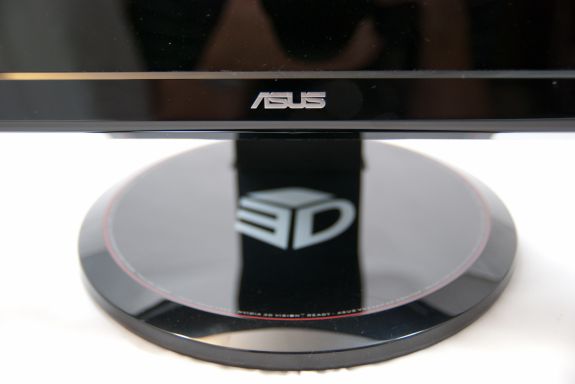ASUS VG236H 23-inch 3D Display Review: 120Hz is the Future
by Brian Klug on August 7, 2010 2:48 AM ESTIntroduction
120Hz panels are definitely still market newcomers - in fact, look no further than Newegg, where there still isn’t a 120Hz category, much less a refresh rate field for drilling down products. The necessity for 120Hz panels arose entirely out of the ongoing 3D obsession across the entire consumer electronics segment, something that remains a difficult sell for many gamers. On a technical level, the necessity for 120Hz arises from the need to drive two discrete 60Hz images - one 60Hz image for each eye. In its current incarnation, consumer 3D technology relies primarily on active shutter glasses - parallax barrier 3D displays are still too expensive, and I’ve yet to see passive polarization methods used outside the movie theatre. But you probably already know most of the 3D story.
Though the 120Hz refresh frequency does make games playable in 3D, there’s another important benefit of using a faster refresh rate - everything looks smoother, and you can now drive up to 120 FPS without tearing. The ASUS VG236H was my first exposure to 120Hz refresh displays that aren’t CRTs, and the difference is about as subtle as a dump truck driving through your living room. I spent the first half hour seriously just dragging windows back and forth across the desktop - from a 120Hz display to a 60Hz, stunned at how smooth and different 120Hz was. Yeah, it’s that different.
If you’re the kind of person that cares about squeezing every last FPS out of your box - regardless of how you feel about 3D - don’t even bother reading the rest of this review, just run, don’t walk, to the store and get this 120Hz display. I’m serious.
ASUS’ VG236H isn’t perfect, like any product there are a few caveats. That aside, honestly, the completely unparalleled level of smoothness on a 120 Hz display has made me hyper attuned to just how flickery 60Hz looks on all the other LCDs I’ve got.
Oh and my initial skepticism about 3D? I’m still shocked about it, but I've completely changed my mind.
Let’s dive into this review.











121 Comments
View All Comments
mino - Tuesday, August 10, 2010 - link
.. reasonable 1920x1200 ..dingetje - Saturday, August 7, 2010 - link
I will immediately get one....when 1920 x 1200 models are available.A 1920 x 1080 screen is just not acceptable for me, even when it's 120hz goodness.
Looking forward to more 120hz screen reviews....thx
Taft12 - Saturday, August 7, 2010 - link
How long can you hold your breath? I don't think 1920x1200 is coming back on the market ever again.ZoZo - Sunday, August 8, 2010 - link
You may have to wait a long time.It appears that 16:10 is being abandoned.
DarkUltra - Sunday, August 8, 2010 - link
For now, yes but if there is a market for it it will hopefully return. The 23" 16:9 we have at works is just too wide for me; the 1920x1200 24" my father have is really much higher, it can fit an entire Windows 7 double-sized task bar and a ribbon menu more than 1080.martin5000 - Saturday, August 7, 2010 - link
16:9 is absolutely horrible for computers. Its so disappointing that this is the current trend.Glossy is also terrible, maybe the colours do look a bit more vibrant, but at the cost of not actually be able to see the screen unless you're in the perfect light conditions, no thanks!
medi01 - Saturday, August 7, 2010 - link
I second that. Basically it's all about marketing:1) glossy screens probably look better in shops
2) X inches monitor with 4:3 ratio has 12% more pixels than 16:9 => it's cheaper to produce
Mr Perfect - Saturday, August 7, 2010 - link
I imaging that being able to put "FULL 1080P HD!" on the box doesn't hurt sales either.So, to recap, change this into a 16:10, matte finish, IPS panel.
BansheeX - Sunday, August 8, 2010 - link
You're both nuts. No aspect ratio inherently gives more resolution than any other. Case-in-point, 3200x1800 is a 16:9 resolution that is much higher than 1600x1200 (4:3) or 1920x1200 (16:10). The reason 1920x1080 is so common for 16:9 is mainly the result of established manufacturing processes and 1:1 scaling of HD material.Quidam67 - Sunday, August 8, 2010 - link
I genuinely don't understand why some people are showing such a strong reaction against 16:9 monitors. I must be missing the point, or is it really just the slightly different aspect ratio + slightly less pixels that has them all worked up?!?